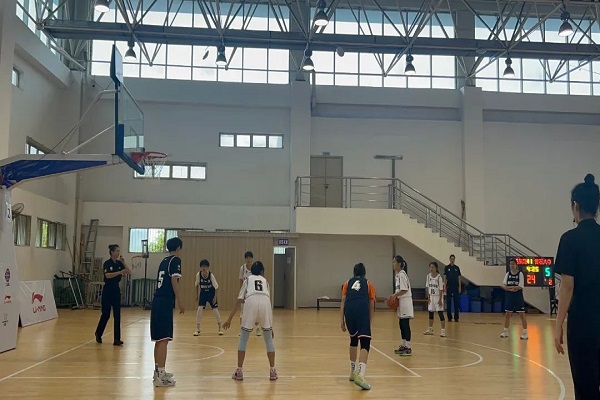PAGEPAGE1病原体微生物学实验室的生物安全知识第1条:病原体微生物学实验室生物安全知识的病原体微生物学实验室生物安全知识1的知识1。 2。通常,用普通的肥皂盒水冲洗,但在高度危险的情况下,建议使用灭菌的肥皂。用肥皂完全擦洗双手,将其冲洗至少10秒钟,用干净的水冲洗它们,然后用干净的纸巾或毛巾擦干它们。 3。洗手后,用纸巾或毛巾关闭水龙头,以防止洗手再次被污染。 2。如何处理细菌和毒种物种的污染污染1。如果传染性材料在眼睛和脸上飞溅,他们应该立即倾向于冲洗3秒钟。涉及的人将立即停止工作,退出,隔离,观察和预防和治疗。 2。如果传染性材料被溅到地面上,请立即使用消毒剂对房间进行消毒,使用喷雾对其进行消毒,停止工作和退出,并隔离参与观察,预防和治疗的当事方。实验室关闭24小时,然后消毒,并在相隔24小时后继续工作。 3。如果将传染性材料溅入生物安全柜中,则可以用消毒剂纱布覆盖,并可以继续工作。 4。如果传染性材料被溅到衣服上,请立即停止工作,并在更换防护服后继续工作。 3。对传染性物质的破裂或溢出的紧急措施1。含有感染的物品,例如瓶子或容器,以及溢出的感染(例如培养物),应立即被布或组织覆盖。将消毒剂倒在顶部,并在至少30秒后清洁布,纸巾和破碎的物品。
用镊子清洁玻璃碎片。最后,用消毒剂擦拭受污染的区域。 2。如果您使用垃圾桶清洁破碎的物体,则应将它们浸泡在高压中或将其放在有效的消毒剂中24小时。用于清洁的布,纸巾和抹布应放在污染物容器中。 4。如何在实验室活动中正确使用手套1。戴的手套没有泄漏。 2。戴上手套后,您可以完全遮住手和手腕。如有必要,覆盖实验室服装或外套的袖子。 3。在撕裂,损坏或怀疑内部污染时更换手套。 4。手套专门用于实验室工作。 5。工作完成或暂停后,应安全地将其消毒,删除和处置。第2条:关于致病微生物实验室生物安全的致病微生物实验室生物安全的自我检查报告。 In order to strengthen the biosafety management of pathogenic microbial laboratory and prevent the spread of related diseases, Pingyi County Maternal and Child Health Hospital In order to strengthen the biosafety management of pathogenic microbial laboratory and prevent the spread of related diseases, in accordance with the requirements of the Linyi Municipal Health and Family Planning Commission on forwarding the "Notice on Carrying out the special biosafety inspection of pathogenic microbial laboratory对于20xx人类传染病,我们的单位总结了致病微生物实验室的生物安全自我检查的相关情况。现在,自我检查工作报告如下:1。非常重视它,仔细组织并完全实施各种管理措施。首先是根据相关标准和要求加强生物安全管理组织的建设。一个生物安全委员会与卫生保健医院院长成立,担任团体领导人,负责董事,担任副团体负责人,实验室负责人和相关部门负责人作为成员。它特别负责实验室生物安全的日常管理以及配备全日制和兼职生物安全主管的计划的实施,并特别负责对实验室的每日生物安全监督和检查。
已经建立了生物安全组织的管理,并制定了组织结构图,并与相关人员签署了“实验室生物安全责任信”和“实验室生物安全承诺信”。第二个是严格执行实验室测试机构的管理法规。致病性微生物实验已向上级卫生行政部门提起,并获得了申请证书;一系列实验室生物安全管理实施计划已得到认真制定和实施。第三个是建立和改善各种生物安全管理系统和紧急计划。在实验室安全管理手册,操作程序(SOP),生物安全保护措施以及员工健康监测,细菌(有毒)物种管理,医疗废物处理,实验室感染控制等以及有关医疗废物治疗,止损管理,急诊管理人员培训的详细法规中,对各种培训,确保对人员进行工具的人员和详细的法规,对60多个系统和计划已经制定了60多个系统和计划。 2。阐明要求,全面促进并标准化病原微生物实验室的生物安全管理。首先,加强和改善致病微生物实验室的构建。准备了生物安全手册和标准操作程序(SOP),并制定了完整的安全保护系统,管理措施以及仪器和设备操作说明。加强辅助生物安全实验室的构建,例如艾滋病筛选实验室和微生物实验室,安装访问控制系统,建立清洁区和受污染的区域,制作生物安全标记,并为其配备安全保护设施,例如生物安全柜和眼垫圈。第二个是加强实验室数据档案,工具和设备的管理。仔细执行实验室测试和检查记录以及档案数据保存以及致病性微生物的管理,增强仪器和设备的维护和管理,定期检查,维护和维护仪器和设备,例如高压灭菌,电动加热恒温干燥盒,并保留记录。

实验室记录和档案材料是标准化和完整的。所有实验都是及时,完整的。一个敬业的人每周一次组织一次实验室生物安全检查,并保留检查记录。加强对员工的生物安全保护,并建立实验室人员的健康记录。各种类型档案的保存和管理符合相关法规。第三是加强传染性材料的运输和医疗废物的管理。应按照法规严格包装,运输和存储实验室传染性材料,标本,医疗废物和其他材料。实验室人员将接受生物安全知识的培训,包括致病微生物实验室的生物安全管理法规,医疗废物管理法规,医疗和卫生机构的医疗废物管理措施以及有关高度致病致病性微生物细菌(有毒)物种或可能感染义务的高度致病致病性微生物细菌或标本的管理法规。所有人员都接受了生物安全知识的培训,并通过培训后,他们获得了工作认证。确保致病微生物实验室的生物安全。第3款,20XX,第3条:病原体微生物管理系统的生物安全管理系统,用于病原体微生物实验室生物安全管理系统第1条,以加强致病性微生物实验室的生物安全管理并保护实验室工作人员和公众的健康状况,该体系根据“生物保险基础”为基础,并根据“ Promimial Microbiare Microbecor”逐步制定了该系统。第2条该实验室主要涉及第三种致病性微生物(第二种类型的致病微生物,例如结核病),该生物符合次级生物安全保护水平(BSL-2),适合于从微生物学检查中接受未知病原体的人,体液和组织的血液,体液和组织。因此,它主要根据二级生物安全保护水平进行管理。
从事实验活动应严格遵守相关的国家标准和实验室技术规格和操作程序。第3条安全标准。第三种类型的致病微生物会导致人类或动物疾病,但通常不会对人,动物或环境造成严重伤害,传播风险有限,在实验室感染后很少引起严重的疾病,并且有有效的治疗方法和预防措施。暴露于这些致病性微生物的工作人员的主要伤害是意外的皮肤或粘膜损害与传染性材料相关,或吞咽感染性食物。必须强调的是,使用受污染的针头或锋利的工具时,您应该非常谨慎。通过气溶胶途径传播的未知微生物的保护性程序,具有潜在的气溶胶或高溅起,增加了对员工的接触:1。用布或组织吸收溢出; 2。将适当的消毒剂倒在组织上并覆盖周围的区域; 3。作用30分钟后清洁治疗物质; 4。如有必要,重复上述步骤。第4条:应建立一个实验室的生物安全管理团队,该团队应由实验室部长,微生物实验室和相关人员的负责人组成,并应负责制定和修改生物保护管理系统,实验室技术规格以及操作程序以及组织和组织和组织和组织和组织和实施。部门主任兼实验室团队负责人是首批普通实践和实验室生物安全的负责人。高级微生物检查员被任命为安全官员,负责监督和检查实验室技术规格和操作程序的实施。第5条:每年都会对工作人员进行定期培训,以确保他们掌握实验室技术规格,操作程序,生物安全保护知识和实践操作技能以及进行评估。
只有通过评估的人才能从事这项工作。第6条实验室应具有适合收集致病微生物样品所需的生物安全保护水平的设备;采取有效的措施来防止致病微生物的传播和感染;并具有技术和手段,以确保致病微生物样品的质量。员工必须严格遵守操作程序,防止致病性微生物在收集过程中传播和感染,并详细记录样品的来源,收集过程和方法。第7条:制定严格的安全存储系统,记录致病性微生物细菌(有毒)物种和样品的入口,流出和存储,建立一个存档系统,并指定一个专门的人负责。第8条实验室感染控制。根据有关国务院相关部门的环境保护和法规的相关法律法规,应处理废水,废气和其他废物,并应制定相应的环境保护措施以防止环境污染。与医院合作,定期检查法规和法规的实施,例如对实验室的生物安全保护,病原性微生物细菌(有毒)物种(有毒)物种和样品的保存和使用,安全操作,实验室中排出的废水和废气,以及其他废物处理,以及定期调查和了解实验室工作人员的健康状况。第9条如果违反了“关于病原体微生物实验室的生物安全管理的法规”,并且未能实施该系统,并导致后果,则他应承担相应的法律或行政责任。第1条实验室操作的基本规格第1条。实验室的进入。没有与实验室工作无关的人不得未经批准就进入实验室工作区。不允许儿童进入实验室工作区。可能会增加感染风险或在不允许进入实验室后可能造成严重后果的人员。

•BSL-2实验室门应标有国际常见的生物危害警告标志,包括一个常见的生物危害标志,表明传染性因素,名称,电话号码和进入实验室的特殊要求。 •应该关闭实验室的门。 •与实验室工作无关的动物不得带入实验室。第2条个人保护要求•在实验室工作时,您必须穿工作服,引擎盖或防护服,帽子和口罩。 •执行可能暴露于血液,体液和其他潜在感染材料的操作时,戴上适当的手套。使用手套后,应在将其取出之前对其进行消毒,然后必须洗涤它们。不得清洁和重复使用一次性手套。 •在处理传染性实验材料和动物之后,以及离开实验室工作区域后,必须洗涤等待。 •当在生物安全柜中不可能操作时,必须佩戴合适的安全眼镜,口罩(口罩)或其他保护设备,以防止眼睛或脸部飞溅或雾化感染材料,或防止碰撞或人造紫外线辐射受到损害。 •严格禁止在实验室穿着防护服的实验室工作区域。 •实验室不允许脚趾露出脚趾的鞋子。 •禁止在实验室工作区域中的食物,水,烟雾,化妆和处理隐形眼镜。 •禁止在实验室工作区域存储食物和饮料。 •实验室中使用的防护服不能与日常衣服放置在同一橱柜中。第3条的运营指导原则:严格禁止使用口腔吸水管,并且严格禁止将实验材料放在口腔中。严格禁止舔标签。
•所有实验操作都应以最小化气溶胶和微小液滴形成的方式进行。 •使用注射针和注射器的使用应受到限制。除了在实验动物中注射或提取体液外,还不能将注射针和注射器用于移液或其他目的。 •实验室应制定并实施用于处理溢出物的标准操作程序。必须向实验室负责人报告溢出,事故以及明显或可能接触传染性物质的。实验室应如实记录暴露和治疗状况并保留相关记录。 •在排放到家用污水管(使用化学或物理方法)之前,必须去除受污染的液体。根据处理过的微生物因素的风险评估结果,准备一种特殊的污水处理系统。 •只有在实验室中未污染的纸可以从实验室中取出。第4条实验室工作领域的管理原则•应保持清洁和整洁,严格禁止将与实验无关的物品放置。 •每天下班后应清洁工作表面。如果发生潜在的有害物质溢出,则应立即去除污染。 •在被丢弃或清洁和重复使用之前,必须去除所有受污染的材料,标本和文化。 •传染性材料的包装和运输应遵守“传染性材料运输指南”相关的国家和/或国际法规。 •如果可以打开窗口,则应安装防止节肢动物输入的屏幕。第五条生物安全管理的指导原则•实验室负责人负责制定和采用生物安全管理计划和实验室安全或/和操作手册。
•实验室应该能够提供常规的实验室安全培训并建立系统。 •实验室负责人(或负责生物安全人员)应告知实验室人员生物安全实验室的特殊危害,还要求他们阅读生物安全或/和操作手册并遵循标准的操作程序。可用于访问的安全性或/或操作手册应在实验室中找到。必须对所有实验室人员进行培训,以了解其工作的危险,掌握相关的管理法规和操作程序,并且只能在通过评估后从事相关的实验室工作。 •应制定针对节肢动物和啮齿动物的控制程序。 •如有必要,应为所有实验室人员提供适当的医疗评估,监测和治疗以及健康记录。实验室人员应接受与正在操作的生物学因素或实验室潜在因素有关的接种或测试。第6条的污染物和废物处理。实验室和医疗废物必须遵守医疗机构在医疗,预防,医疗保健和其他相关活动中产生的直接或间接感染废物的国家标准“医院废物管理法规”的定义:直接或间接的感染废物。 - 当用特殊包装和容器及时收集生成的医疗废物时,应有明显的警告信号和警告说明。实验废物应放置在实验室指定的安全场所中,并将其放置在特殊的密封包装容器中,以根据该类别的类别渗透,以侵蚀和防sharp设备穿透,并定期安全地从实验室中运输出来。在运输之前,它应该在生物学上是安全的。 - 在适当的无害治疗后,应排出危害的气体,气溶胶,污水和废物液体。
- 在设计和实施对生物危害废物的治疗,运输和放弃的计划之前,请参考医院废物管理法规的相关法规。 - 被高压灭菌蒸汽消毒的废物可以在其他地方焚化,然后将其处理或埋葬在指定的垃圾场中。第7条工作人员应掌握个人保护设备时应掌握的关键点:1。他们必须对工作的性质和特征有很好的了解并掌握其工作的性质和特征。 2。涉及的实验工作所需的个人防护设备类型。 3。正确的用法方法。 BSL-2实验室的基本要求:1。在实验过程中,工作人员应戴上工作服和防护眼镜。 2。员工在手上造成皮肤损伤或皮疹时戴上手套。 3.穿防护服,例如在实验室里穿工作服或上衣。离开实验室时,必须脱下保护诉讼并将其留在实验室中。不要把它戴出。二手工作服应首先消毒,然后均匀洗涤或丢弃。当您的手可能与受感染的材料,受污染的表面或设备接触时,戴上手套。如果感染材料可能会溢出或溢出,请戴两双手套。不要戴手套离开实验室。只有在完成工作完成后才能卸下手套。第4章:关于病原体微生物实验室生物安全管理(样本论文)的法规,有关病原体微生物实验室的生物安全管理,国家根据实验室的生物安全保护水平并根据国家实验室生物保护标准的规定,将实验室分为第一,第二,第三和第四级。新建筑,重建,第三级,第四级实验室的扩展或生产和进口移动第三级实验室应遵守以下规定:(1)遵守国家生物安全实验室系统计划并根据法律执行相关的批准程序; (2)由国务院的科学和技术当局审查和批准; (3)遵守国家生物安全实验室建筑的技术规格; (4)根据“中国人民共和国的环境影响评估法”的规定进行环境影响评估,并由环境保护当局进行审查和批准; (5)生物安全保护水平与其打算参与的实验活动一致。
上一段规定中提到的国家生物安全实验室系统应由国务院投资部与国务院的相关部门合作制定。国家生物安全实验室系统计划的制定应遵循全部控制,合理的布局和资源共享的原则,并应举行听证或论证会议,以倾听公共卫生,环境保护,投资管理和实验室管理方面的专家意见。第3级和第4级实验室应通过实验室的国家认证。由州议会的认证监督和行政部门确定的认证机构应按照国家实验室生物安全标准以及这些法规的相关规定认证第3和4级实验室;如果实验室通过认证,则应签发相应级别的生物安全实验室证书。该证书有效期为5年。 1级和2级实验室不允许从事高度致病性的微生物的实验活性。当从事高度致病的致病微生物实验活动时,第3级和第4级实验室应符合以下条件:(1)实验的目的和实验活动的目的是遵守卫生部门或州议会兽医部的规定; (2)通过了实验室的国家认证; (3)有与要参与的实验活动兼容的员工; (4)该项目的质量已被建筑部根据法律进行了测试和接受。州议会卫生部或兽医部应审查第三级和四级实验室是否按照各自的职责符合上述条件;如果满足条件,将发出资格证书,以从事高度致病性微生物的实验活动。如果获得高度致病致病性微生物的实验活动的资格证书,并且需要从事某些高度致病的致病性微生物或可疑的高度致病致病性微生物的实验活动,则应在卫生部门或以上的国家政府批准的情况下,将其提交给国有委员会或以上的官员级别,以实现该国的卫生部门,以实现本质或兽医委员会的批准。在省级或高于省级批准的人民政府兽医部门。
实验活动和工作条件的结果应报告给原始批准部门。该实验室应申请或接受与高度致病的致病性微生物有关的科学研究项目,并应满足科学研究需求和生物安全需求,具有相应的生物安全保护水平,并得到州议会卫生部门或兽医部门的批准。当进入和退出检查以及隔离机构,医疗和卫生机构以及动物流行病的预防机构在实验室进行测试和诊断时,他们发现高度致病的致病性微生物或可疑的高度致病的致病性型微生物,需要与这些高度正常的经过批评,他们在这些经典的经纪性中,他们需要进一步参与这些经典的经验,并具有这些经验性的经验,这些经验是有效的。法规并在获得相应资格证书的实验室中进行。专门从事测试和诊断的实验室应严格遵守卫生部门或国务院兽医部的法规,建立并改善规则和法规,以确保实验室生物安全。卫生部或省级政府省级或以上省级的兽医部门应决定是否在收到与高度致病性致病性微生物有关的实验活动之日起在收到申请申请之日起批准该部门。如果入门检查和隔离机构适用于实验室,以进行高度致病的致病性微生物或可疑的高度致病致病性微生物的高度实验活动,以获得迫切需要检查和隔离工作的紧急需求,那么卫生部门或兽医部门的卫生部门或兽医部门应在2小时内进行批准,以便在2小时内进行批准。如果在2小时内没有做出决定,则实验室可以从事相应的实验活动。省级政府卫生部门或省级兽医部门应在省级或之上提供便利,以便申请人通过电报,电传,传真,电子数据交换和电子邮件申请。
一级或二级实验室的新建筑,重建或扩展应向卫生部或县级市政人民政府提交。卫生部门或县级市政府政府应总结每年的申报情况,并将其报告给该省人民政府,自治区或市政府的卫生部门或兽医部,直接在中央政府下。州议会的卫生当局和兽医部门应定期总结并互相告知实验室的数量,实验室的建立和分配,以及获得了高度致病致病的微生物及其在相关实验活动中的实验活动的3级和4级实验室。已完成并通过实验室的国家认证的3级和第4级实验室应在其所在地的县级人民政府的环境保护部提交。环境保护当局应根据法律和行政法规规定,监督和检查实验室释放的废水,废气和其他废物的处置。对于尚未发现或宣布在我国被宣布消除的致病性微生物,任何单位或个人均不得未经批准从事相关的实验活动。为了预防和控制传染病,如果您需要从事上一段中提到的致病微生物有关的实验活动,则应得到州议会卫生部门或兽医部门的批准,并在批准部门指定的专业实验室中进行。如果实验室使用新技术和新方法从事与高度致病的致病性微生物有关的实验活动,则应满足防止高度致病的致病性微生物的传播的要求,确保操作员的生物安全和人身安全,并由民族生物保护专家委员会的Patterentenent Microbial实验室实验室实验室专家委员会证明;只有在被证明可行的情况下才能使用。

如果您需要从事与动物中高度致病的致病性微生物有关的实验活动,则应在符合动物实验室的国家生物安全标准的高于第3级实验室中进行。实验室机构部门负责实验室的生物安全管理。实验室的建立部门应根据这些法规的规定制定科学和严格的管理系统,并定期检查相关的生物安全法规的实施,并定期检查,维护和更新实验室设施,设备,材料等,以确保它们遵守国家标准。实验室及其主管部门的建立部门应加强日常实验室的管理。实验室负责人是第一个负责实验室生物安全的人。实验室活动应严格遵守相关的国家标准以及实验室技术规格和操作程序。 The laboratory head shall designate a special person to supervise and inspect the implementation of the laboratory technical specifications and operating procedures. The establishment units of laboratories engaged in experimental activities related to highly pathogenic pathogenic microorganisms shall establish and improve safety protection systems, take safety protection measures, strictly prevent the theft, robbery, loss and leakage of highly pathogenic pathogenic microorganisms, and ensure the safety of laboratories and their pathogenic microorganisms. If a highly pathogenic pathogenic microorganism occurs in a laboratory, it is stolen, lost or leaked, the laboratory establishment unit shall report in accordance with the provisions of Article 17 of these Regulations. Laboratories engaged in experimental activities related to highly pathogenic pathogenic microorganisms shall file with the local public security organs and accept supervision and guidance from the public security organs regarding laboratory security and protection work. The laboratory or laboratory establishment unit shall conduct regular training of staff every year to ensure that they master the laboratory technical specifications, operating procedures, biosafety protection knowledge and practical operation skills, and conduct assessments.
Only those who pass the assessment can take up the job. Laboratories engaged in experimental activities related to highly pathogenic pathogenic microorganisms shall report the training and assessment of their staff and the operation of the laboratory to the health department or the veterinary department of the people's government of provinces, autonomous regions, and municipalities directly under the Central Government every six months. More than two staff members should conduct experimental activities related to highly pathogenic pathogenic microorganisms. Staff or other relevant personnel entering the laboratory engaged in experimental activities related to highly pathogenic pathogenic microorganisms shall be approved by the laboratory head. The laboratory shall provide them with protective supplies that meet the protection requirements and take other occupational protective measures. Laboratory employed in experimental activities related to highly pathogenic pathogenic microorganisms should also monitor the laboratory staff health, organize physical examinations every year, and establish health records; if necessary, laboratory staff should be vaccinated. In the same independent safety area of the same laboratory, only one highly pathogenic laboratory can be engaged in at the same time. Experimental archives should be established to record the laboratory usage and safety supervision. The shelf life of the laboratory's experimental archives engaged in experimental activities related to highly pathogenic pathogenic microorganisms shall not be less than 20 years. Laboratories shall dispose of wastewater, waste gas and other wastes in accordance with relevant laws and administrative regulations on environmental protection and regulations of relevant departments of the State Council, and formulate corresponding environmental protection measures to prevent environmental pollution. Level 3 and Level 4 laboratories shall mark biohazard marks and biosafety laboratory-level marks specified by the health authorities and veterinary departments of the State Council in a clear position.
Laboratory engaging in experimental activities related to highly pathogenic pathogenic microorganisms shall formulate emergency response plans for laboratory infection and file with the health department or veterinary department of the people's government of the province, autonomous region, or municipality directly under the Central Government where the laboratory is located. The health department of the State Council and the veterinary department shall, together with relevant departments of the State Council, organize experts in pathogenics, immunology, laboratory medicine, epidemiology, preventive veterinary medicine, environmental protection and laboratory management to form the National Pathogen Microbial Laboratory Biosafety Expert Committee. The committee is responsible for the biosafety assessment, technical consultation and demonstration of the establishment and operation of laboratories related to highly pathogenic pathogenic microorganisms. The health departments and veterinary departments of the people's governments of provinces, autonomous regions, and municipalities directly under the Central Government shall, together with relevant departments of the people's governments at the same level, organize experts in pathogenics, immunology, laboratory medicine, epidemiology, preventive veterinary medicine, environmental protection and laboratory management, and form the biosafety expert committee of the pathogenic microbial laboratory in this region. The committee undertakes technical consultation on the establishment and operation of laboratories in the region. Chapter 5: Carry out biosafety work in the pathogenic microbial laboratory. Report on the biosafety self-inspection work in the pathogenic microbial laboratory. In order to ensure the safe operation of the pathogenic microbial laboratory in our center, our center carried out a self-inspection activity on September 24, 20XX in accordance with the document No. 364 of the Fuyang Municipal Health Bureau Health Department [20XX], which lasted for one day. The inspection is mainly based on the quantitative scoring table of the biosafety self-inspection of Fuyang City Laboratory, which mainly includes five aspects: organizational structure and management system, laboratory layout facilities and environment, personnel and management, bacteria (toxic) species and sample management, and waste disposal.
The results of self-inspection are reported as follows: 1. Basic situation 1. Organizational structure and management system The experimental activities carried out by our center were all filed with the Fuyang Municipal Health Bureau; a Biosafety Committee was established in 20XX, and a biosafety management responsibility system was established. The laboratory head was the first responsible person. The committee carried out activities regularly and could provide activity records such as: self-inspection records, meeting records, supervision materials, etc. Establish a laboratory biohazard identification and risk assessment system, and be able to present a laboratory biohazard assessment report; the evaluation basis and proposed measures and procedures will be carried out in accordance with relevant national standards. It can provide a biosafety manual, which includes operating technical regulations, laboratory management system, laboratory safety accident reporting system, emergency handling procedures, staff registration form, and laboratory instrument registration form. It can present self-inspection records. The Biosafety Committee conducts regular reviews of the safety management system. Our center has established archives of each laboratory, and the original records ensure traceability; there is no such phenomenon as writing or modifying the original records at will. 2. The laboratory layout facilities and environmental laboratory partitions are clearly defined: clean areas, semi-polluted areas, and polluted areas, there is no cross-contamination. The laboratory doors and windows are all visible doors and windows; the biosafety level identification is complete. Staff's clothing is separated from laboratory work clothes and items; clothes storage or clothes hanging devices are installed at the door of the laboratory; emergency evacuation routes are installed in the laboratory and are marked. The materials of the laboratory walls, ceilings and floors meet the requirements, the corners of the laboratory countertops are smooth and shock-proof marble, and there are designated rooms for storing spare items outside the laboratory work area, with complete protective supplies and equipment; the identification system is complete; there is a biosafety cabinet, and the quantity is equipped to meet the requirements; biosafety equipment can meet the needs of experimental activities, accident handling equipment, first aid equipment, fire-fighting equipment, and communication equipment are complete, hand washing and disinfection facilities are equipped at the exit near the laboratory, the work area is equipped with eye washing devices, high-pressure steam sterilizers and the quantity meets the work requirements; the windows of this laboratory are all fixed and cannot be opened to view windows; the existing laboratory equipment is used normally and is regularly checked, corrected and maintained as required.
3. Personnel and management. All staff in this laboratory have obtained a biosafety training certificate and are qualified for professional practice. The department has targeted training every year, covering biosafety knowledge, technical specifications, operating procedures, etc. The laboratory has a biosafety supervisor and can carry out supervision work regularly. The staff has a complete file and the experimental methods are all based on relevant technical specifications or national standards or industry standards. The laboratory strictly requires that no activities that are not related to experiments are allowed in the laboratory, and no non-experimental supplies are stored in the laboratory; the level of personal protection meets the requirements. 4. All bacteria (toxic) species and sample management garbage disposal personnel have obtained relevant safety knowledge training, and have protective measures to ensure safety. The bacteria (toxic) species and sample sources, usage records and destruction have detailed records and safe storage to ensure double locks, and the transportation container meets the requirements. 5. Waste disposal The harmless treatment of waste in this laboratory is carried out by entrusting a qualified department to handle it. It can provide a entrusted contract, complete internal circulation records, classified treatment is implemented, the temporary storage container meets the requirements, and the medical waste is temporarily stored in a fixed room and clearly marked. If laboratory equipment needs to be discharged from the laboratory, it will be treated harmlessly, and the laboratory wastewater and liquid will be discharged to the outside world after being treated harmlessly. 2. Existing problems. Through this self-inspection, it was found that there are some safety hazards in this laboratory, which is a certain gap with the standard requirements. It is specifically reflected in: 1. The formulation of emergency plans and systems is imperfect, such as: management systems for the collection, transportation and treatment of pathogenic microbial bacteria (toxic) species, laboratory infection, leakage, and bacterial species loss. 2. The internal environmental parameters of the laboratory are not comprehensively monitored; such as: temperature and humidity, illuminance, noise and cleanliness. 3. Qualification materials for transporting highly pathogenic pathogenic microbial samples that have not been approved by the provincial health administrative department. 4. The main entrance door of the laboratory and the laboratory door where the biosafety cabinet are placed can be closed automatically, but it is broken and cannot be closed automatically normally. 3. The next step is to implement the existing problems and make rectifications one by one to ensure that the requirements of superiors are met, and at the same time better protect staff and external environment.
版权声明:本文内容由互联网用户自发贡献,该文观点仅代表作者本人。本站仅提供信息存储空间服务,不拥有所有权,不承担相关法律责任。如发现本站有涉嫌抄袭侵权/违法违规的内容, 请联系本站,一经查实,本站将立刻删除。如若转载,请注明出处:http://www.whnbd.com/html/tiyuwenda/9394.html





